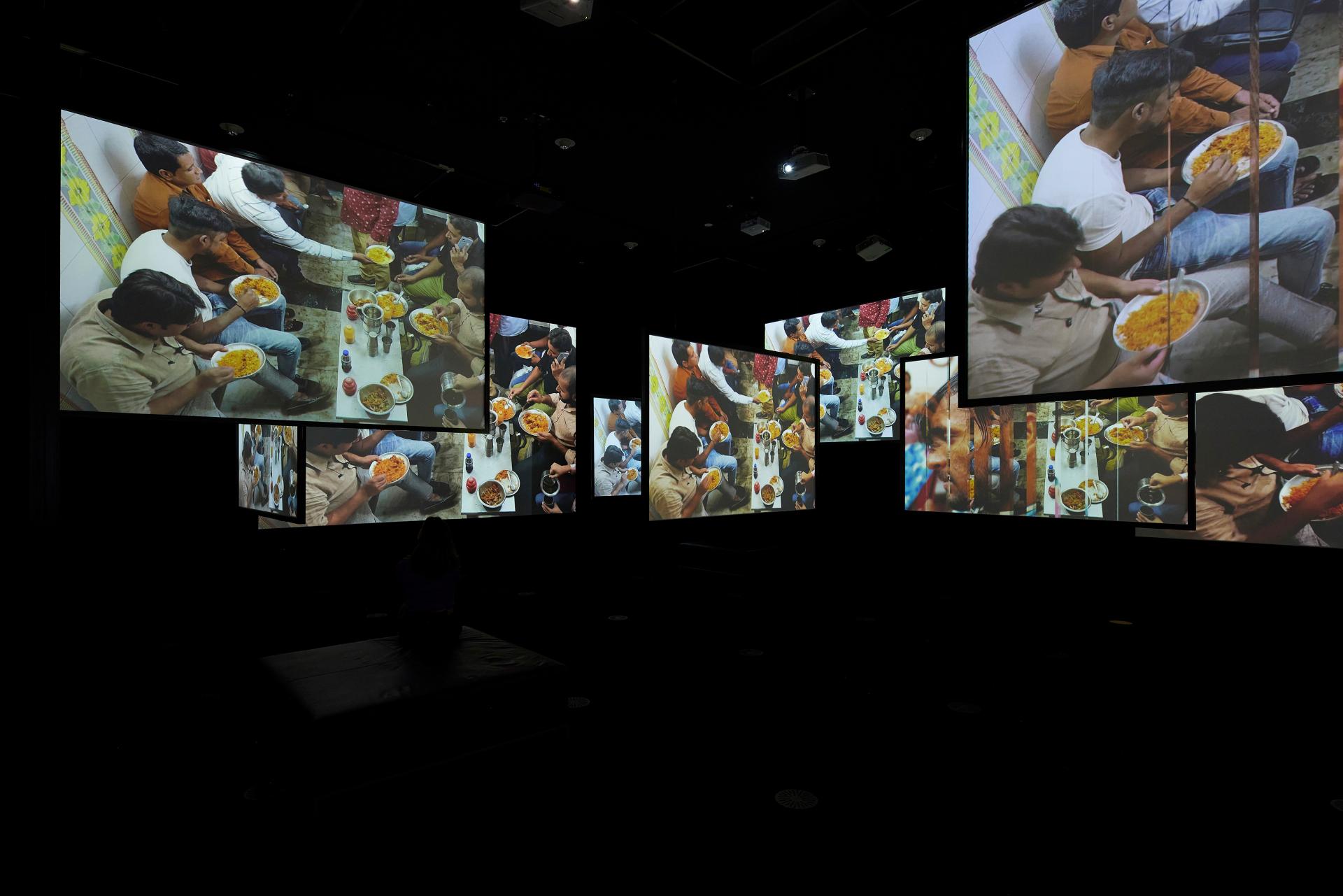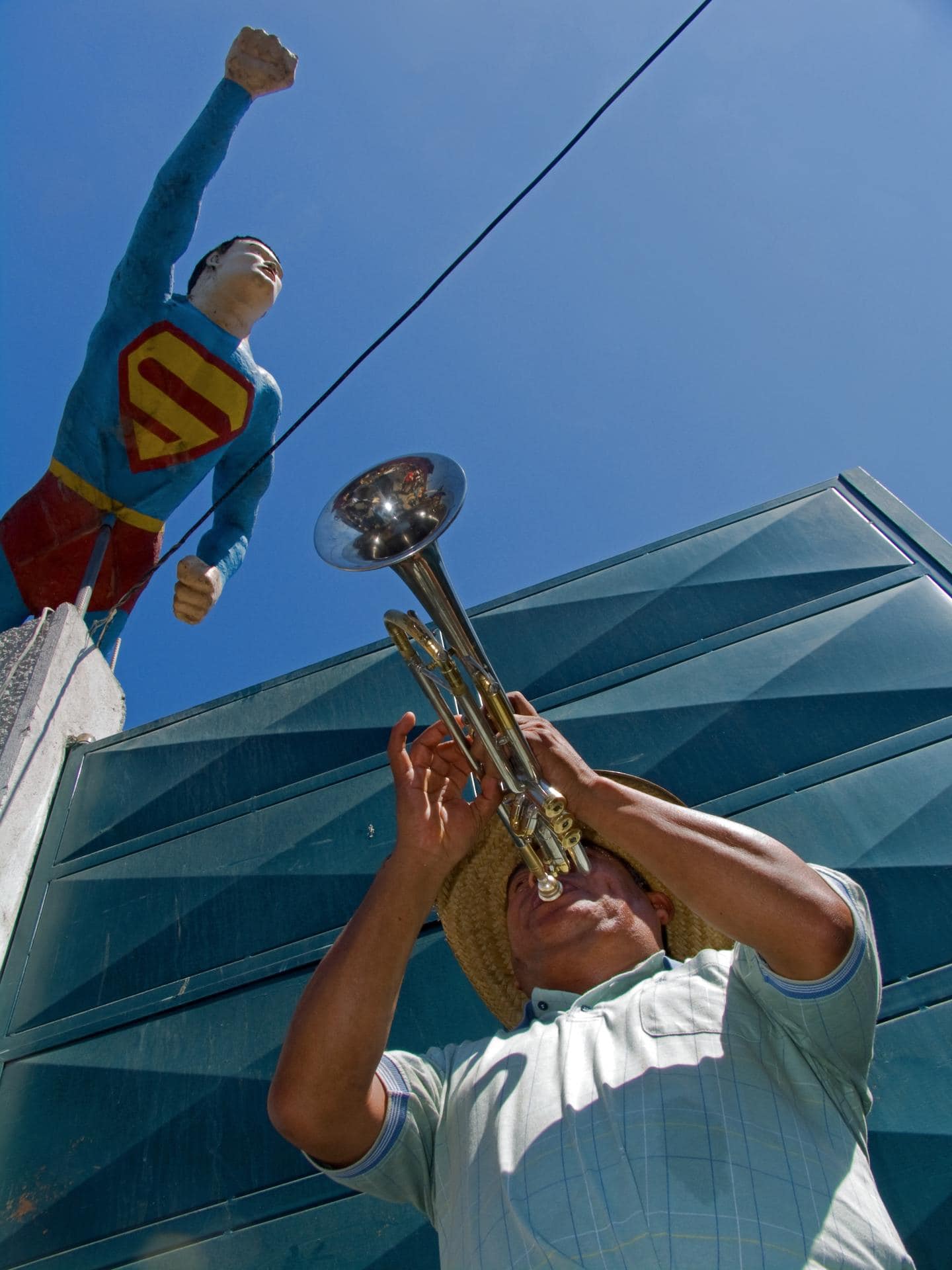Megacities
Ella Howells
Ten columns of text about ten photographers are jammed into a grin at the mouth of a room enveloped with dark carpet. These dental veneers of illustrious self-made third-person bios and black and white headshots precede any glimpse of the fruits of the labour they discuss. As visitors step further into the room, the carpet absorbs any incidental light and sound. The sensory deprivation disembodies visitors against the incoming tide of images that simulate the overwhelmingness of the proverbial Megacity.

The city-slash-room layout possesses its own hostile architecture. The limited seating is invisible, and wherever one stands within the hanging maze of perpendicular screens, they’re blocking someone else’s view. Trying to duck and weave induces claustrophobia, leading people to pool in the corners.
The exhibit showcases the works of ten accomplished street photographers, representing Tokyo, Delhi, Shanghai, Lagos, Sao Paulo, Cairo, Dhaka, Mexico City, Seoul, and Jakarta. The images are presented on numerous screens in sequence, each appearing simultaneously like error windows proliferating in a school’s computer lab. The transitions between images seem to have been animated using an early version of Microsoft PowerPoint. They ripple, spin, and swipe sideways as if dismissed on a dating app. The contents of the photographs vary widely, from poignantly banal scenes of workers eating street food in Delhi captured by Saumya Khandelwal, to incisive portraits of civic life such as Mexican photographer Francisco Mata Rosas’ skyward view of a trumpet player with a bootleg life-size Superman figurine suspended above him.
While many of the photographs are striking in their composition, the messy, disjointed tempo of the presentation deflates their impact. The overall effect is relatively TopArts, with elements of a wine-soaked post-holiday slide night.

The goal of Megacities was to challenge the misconception that populous non-Western megacities are fundamentally antithetical to wealthy Western metropolises. In actuality, working class activity in the recesses between skyscrapers is what shapes the identity of cities everywhere, mega or not. Amalgamating these photographers’ works only serves to Otherise their home cities into an exotified blur. It’s a nonsensical narrative largely funded by and for heads in high-rises, who otherwise may rarely feel their city’s cultural pulse.
Decontextualising the stoic discipline of photojournalism in this manner strips away its traditional gravity, inducing a stylistic hallucination. It’s akin to reimagining National Geographic as a marketing deck within a millennial’s boardroom pitch. A shot of cherry blossom taken by Japanese photographer Mikiko Hara on her signature vintage Ikonta camera would make the perfect gift for a “girlboss” adorning her first corporate office. Naturally, I find such images readily available in the gift shop, destined for their inevitable homes in Ikea Ribba frames.

Occasional interstitial snapshots are sprinkled between the photographers’ slideshows, flecked with softened bokeh lights that evoke nostalgia for the 2014 Tumblr/We Heart It crossposting era. If this treatment of the images exemplifies the street photography scene at the moment, I’m curious as to how (or whether) its culture has evolved since then.
Have our photographers found themselves mired in a blogger aesthetic—let’s call it Eternal Cosmopolitan Wanderlust—that has somehow been enshrined as timeless? Megacities confirms the ubiquity of this tired lens, raising the question of whether this bubble could ever burst. Don’t hold your breath.
Ella Howells is a writer, artist and arts worker on unceded Wurundjeri land.


